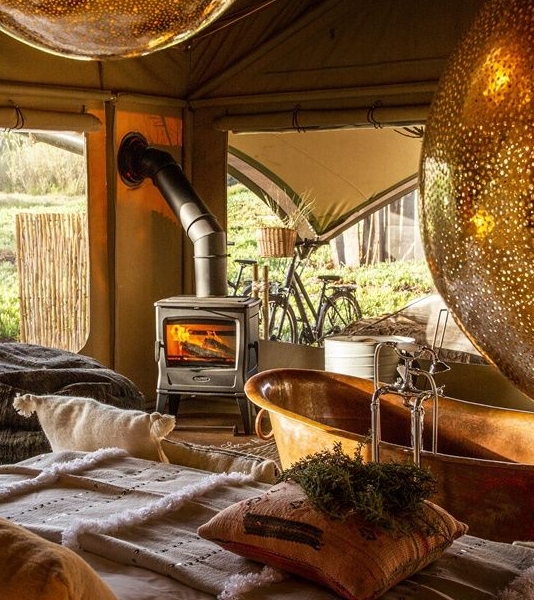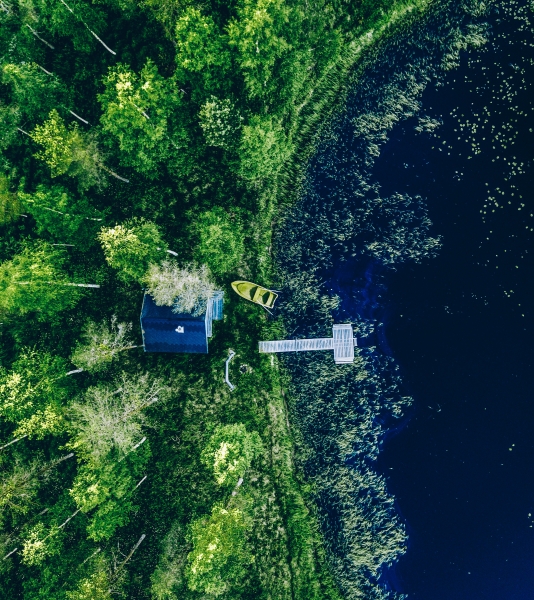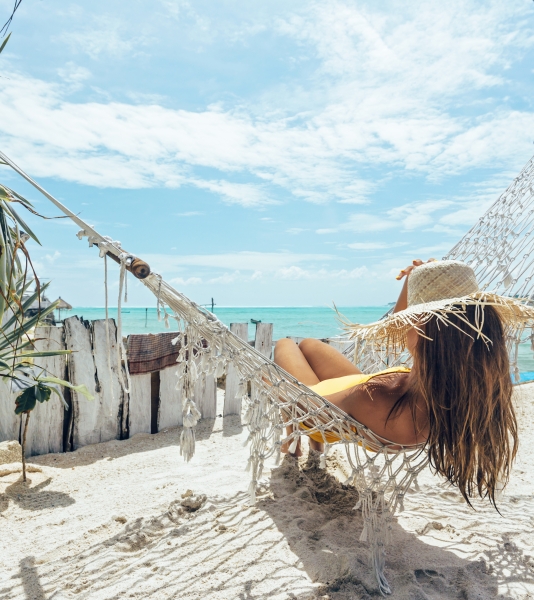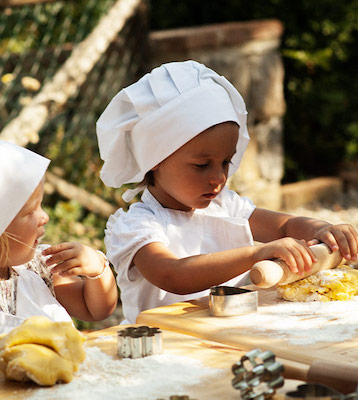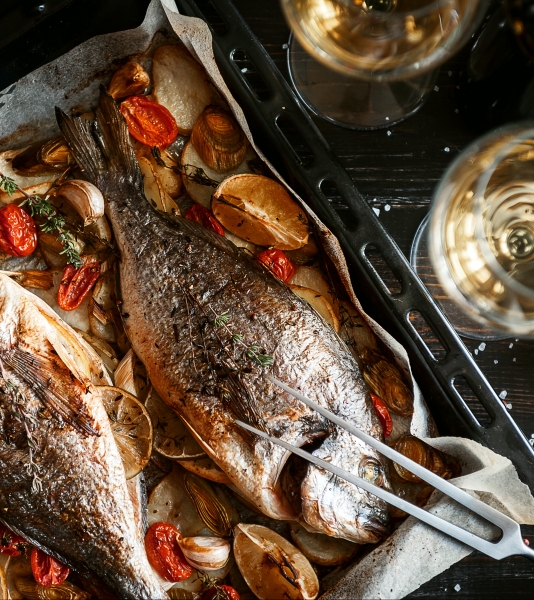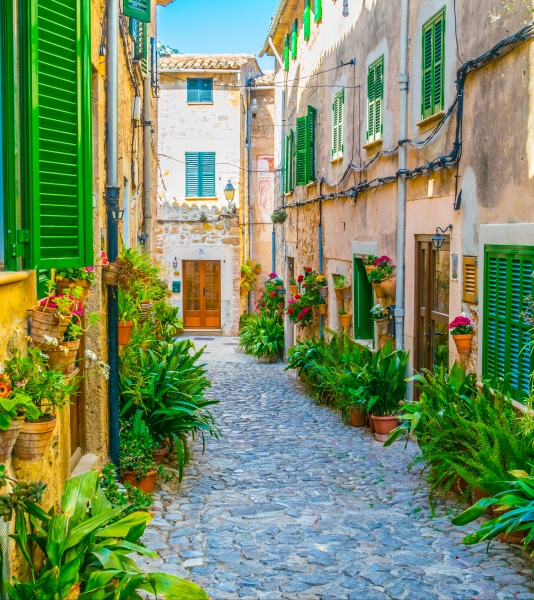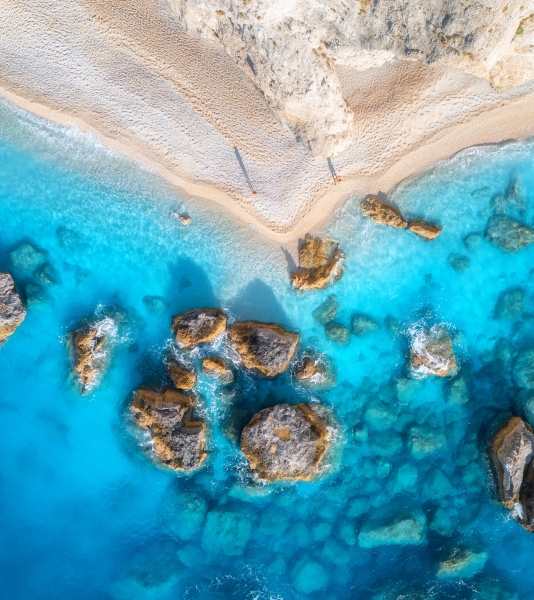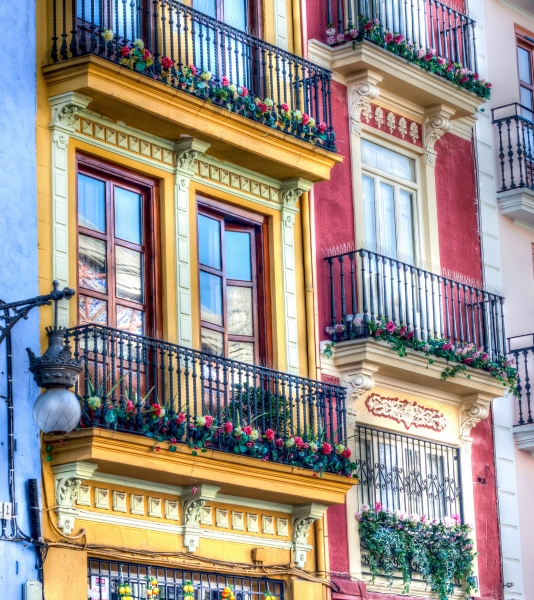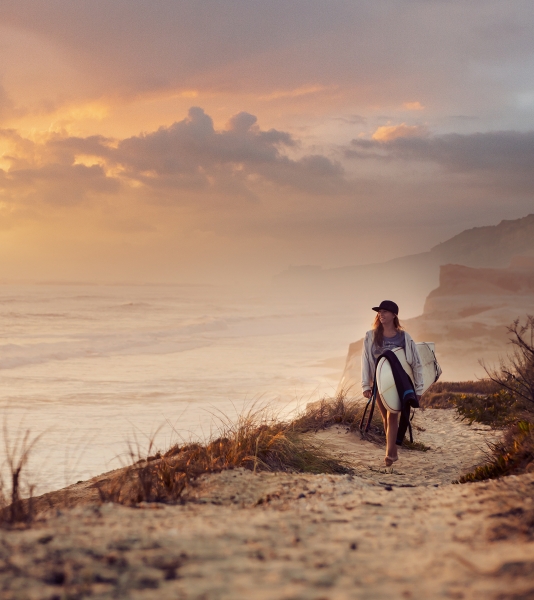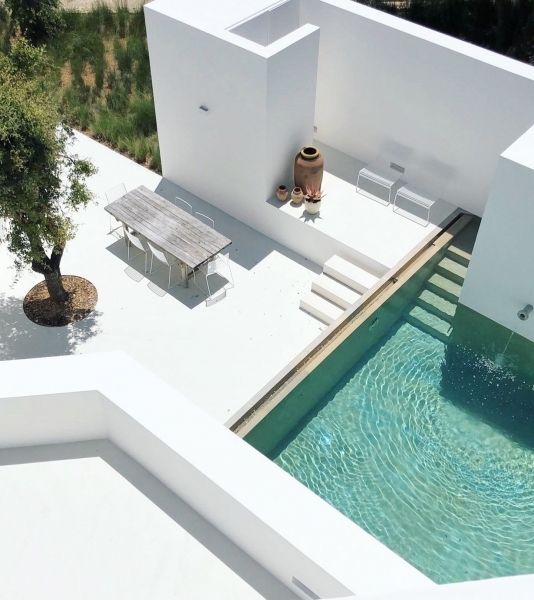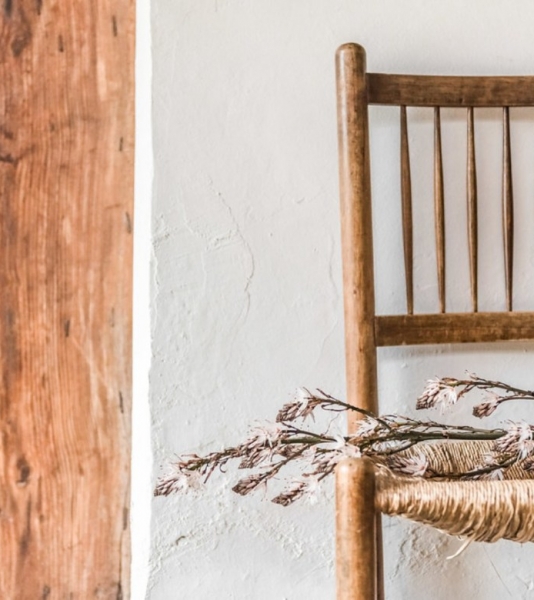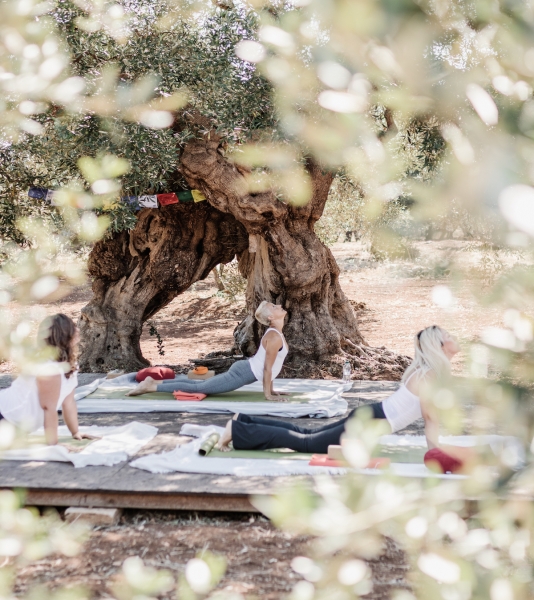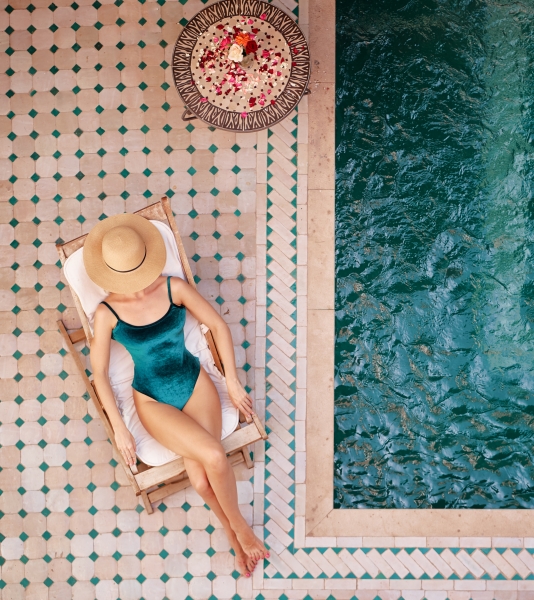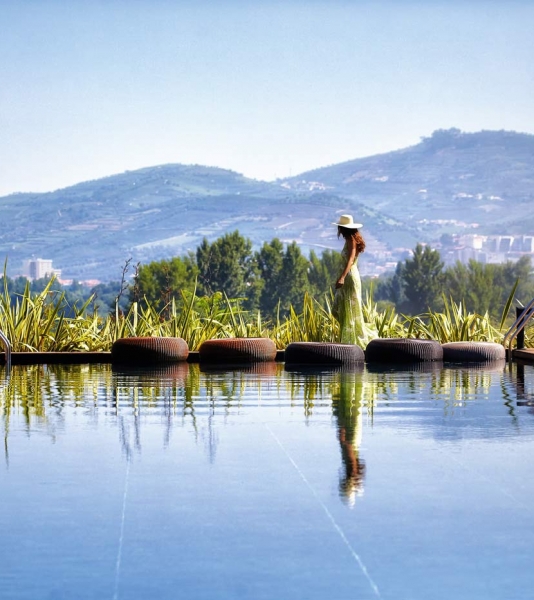Where to stay in Morocco: the best Riads and boutique hotels
Morocco is at once a world away but strangely familiar. Casablanca, Marrakesh, Tangier slip off the tongue as places we’ve all heard of, yet the country still retains an aura of the exotic even to this day – that colourful one thousand and one nights feel and atmosphere.
The fact of the matter remains that Morocco is an intrinsically beautiful land, one that abounds in a heritage and culture. As soon as you set foot on its shores you will be transported to another time and place totally different from what you will leave at home, but at your disposal there lie fascinating cities and landscapes that vary from snow-laden slopes to the highest mountain ranges in Africa and pristine deserts. Morocco's southern coast boasts pleasant weather all year long, meaning that summer never ends.
Our selection of romantic Morocco Riads, boutique hotels and charming guesthouses helps capture the essence of this fascinating country. If you are looking for a specific type of accommodation in Morocco, we propose you our collections where you will be able to choose more easily:
Our favourite towns, villages, and accommodations in Morocco
The best places to stay in towns in Morocco are located in the heart of the Medina and are called Riad. What is a Riad? Simply put, it is a traditional town house with a central garden courtyard from whence it gets its name. The large terrace on the top floor was used to communicate with the neighbours and the household chores. Nowadays the terrace has a more “European” purpose and is used as dining room or leisure area. Peaceful and Zen like, they are usually located in the old part of town or Medina, where they act as an oasis away from the hustle and bustle of the city. A good number are now owned by European ex-pats.
In our selection you can choose between a charming Riad in Essaouira, a Riad in the Medina of Marrakech or a romantic Riad in Fez.
The most beautiful towns and villages in Morocco:
Marrakesh: Marrakech is undoubtedly one of the greatest cities in North Africa, not to mention Morocco itself. The bustle of the Medina, palm-lined streets, and red-earth walls all make for a memorable stay. Visit our guide to the red city, where we give you good tips to visit this beautiful city with its souk and charming Riads and luxury hotels.
Essaouira: Beach, sport, art, and gastronomy, we have it all in this beautiful city at the water's edge. Visit our guide of Essaouira to make sure you do not miss anything.
Agadir: Southern Morocco's most popular city and a sought-after tourist destination. Agadir is also a good base from which to visit the numerous interesting places to see that are within driving distance.
Casablanca: Also known as Dar el Baida, Casablanca is essentially the capital of Morocco and in many respects resembles a Southern European city. European travellers should find it easy to feel at home here and enjoy its lifestyle.
Fez: Much of Fez still holds on to its French roots and you will no doubt be hooked by its Francophile sights, sounds and colourful smells. It has enough attractions too keep you busy for a few days.
Erfoud: Erfoud is located right on the border of the Sahara Desert. Unsurprisingly, it makes for an excellent base for exploring the desert, 4x4 tours and camel trips. Home of the Moroccan specialty 'kalia'.
Tangier: Tangier, also known as the White City, Tangier revolves around its port where the Mediterranean meets the Atlantic Ocean. There are beautiful beaches to enjoy and it is a lively city in its own right.
Meknes is a fascinating city to visit in Morocco. Designated as a UNESCO World Heritage Site, Meknes has a rich history and impressive architecture. Places of interest include the Bab Mansour Gate, theMedersa Bou Inania, the Mausoleum of Moulay Ismail and the granaries of Heri es-Souani. The city also has a less touristy atmosphere compared to Marrakech or Fes, allowing visitors to immerse themselves in authentic Moroccan life.
Tinghir, situated at the foot of the Atlas Mountains, is notable for its houses surrounding an oasis, creating a striking contrast with the aridity of the Todra Valley. The attraction of this Moroccan town is further enhanced by the Ksar Ait Mhamed, an ancient castle that still stands guard over the region.
Ait Ben Haddou, located in the Ounila Valley, stands out as an impressive citadel in the High Atlas, and preserves its historical splendour, attracting adventurers en route to Ouarzazate. This World Heritage Site, with its thousands of gates, offers a living experience and has been the setting for famous films such as Lawrence of Arabia and Gladiator.
Chefchaouen, in northern Morocco, is known for the indigo blue colour of the walls of its houses, which is supposedly used to keep out flies and mosquitoes. The citadel and the great mosque around Uta-el-Hammam stand out. Surrounded by the Rif Mountains, Chefchaouen offers a peaceful atmosphere in a very beautiful setting.
El Jadida, with its Portuguese roots, exhibits architecture that fuses Iberian and Moroccan elements. Its outstanding UNESCO monuments, such as the Mazagan fortress, the Cistern, and the Manueline-style Church of the Assumption, tell the rich history of the place. The medina, with its minarets and lively atmosphere, provides a fascinating experience, revealing the harmonious coexistence of historical heritage and modern life in Morocco.
Asilah, a charming coastal town in northwest Morocco, combines the chaotic mystery of the medinas with the serenity of the sea. A great wall surrounds a beautiful medina of picturesque streets lined with blue and white houses. Asilah is also home to cultural sites such as the palace. The nearby beaches and the combination of culture, history and art make Asilah an interesting and enjoyable destination.
Imlil, perched in the High Atlas Mountains of Morocco, serves as a starting point for exploring the famous Mount Toubkal, the highest peak in North Africa. This picturesque mountain village offers scenic trails, cultural authenticity, and the opportunity to immerse yourself in Berber life. With its spectacular location, Imlil attracts hikers by being a greener marrucos like a calm and beautiful oasis.
Merzouga, located on the threshold of the Sahara next to the Erg Chebbi, offers the fabulous views on the vast dunes that can reach 150 metres in height. This enclave evokes the sensation of being on the edge of civilisation, facing the imposing beauty and immensity of the desert, generating an experience somewhere between awe and peace.
Moulay Idriss, a town of narrow streets lined with white houses, attracts visitors with its shrine to the Idris dynasty, a pioneer of Muslim colonisation. Long a sacred place closed to non-Muslims, today visitors can explore the city and enjoy its historical and spiritual atmosphere, and travellers can explore Volubilis, the best-preserved Roman site in North Africa.
Zagora is a city in southern Morocco, located in the Draa River Valley. Known for its desert landscape and proximity to the Sahara, Zagora offers a unique experience. Its medina has a lively souk, surrounded by palm groves that contrast with the arid surroundings. Zagora is also a starting point for exploring the impressive Draa Gorges and the Kasbahs (fortresses) in the desert, which are part of the region's tourist attraction. In addition, the town retains the remains of an Almoravid palace, adding to its historic charm.
Mountains: The High Atlas is the biggest mountain range in North Africa and offers an impressive range of activities, including, mountain biking, hiking trails and mountain photography. Its high peaks (over 4000 metres) provoke a high level of rainfall and so it boasts many fertile valleys surrounded by rivers and waterfalls. It all makes for some breathtaking sights that should not be missed and which cover some of the most beautiful regions of Morocco. The villages in the High Atlas are small but thriving and home to the Berbers - enduring, hospitable, and very friendly people.
Good to know about Morocco:
Local Customs:
The Moroccans are an extremely hospitable people. Following some basic guidelines will further enhance your enjoyment of Morocco: Avoid provocative clothing, accept mint tea when offered, this a sign of hospitality. Avoid drinking, eating, and smoking in public in daytime during the period of Ramadan.
It is not unusual to be invited by a Moroccan family for a meal. In this case wash your hands, as a symbolic gesture and wait for the master of the house to intone the bismillah (in praise of God).
Access to mosques and holy places is forbidden to non-Muslims (exceptions include the Hassan II Mosque in Casablanca, the Mohammed V Mausoleum in Rabat, the Moulay Ismaïl mausoleum at Meknes and the Moulay Ali Cherif Mausoleum at Rissani).
Entry Requirements:
Anyone visiting Morocco requires a passport. EU, US, Australian and New Zealand citizens do not need VISAS.
Language:
The official language of Morocco is Arabic, but French is widely spoken, whilst English is becoming an increasingly popular language, particularly in the major cities such as Marrakech, Casablanca, and Rabat.
Weather and when to go:
Pretty much all year round is the simple answer, especially on the southern coast where the weather is generally pleasant for the 12 months of the year. In the lowlands cool months last from October to April, but even so, we are talking pleasantly warm days and night time temperatures of 15º. However, winter in the north and the mountain regions is much cooler and wetter. The skiing season lasts from December to March.
Religion:
Islam, the official religion of Morocco, has coexisted peacefully with other religions for many years and there is a sizeable community of foreigners in the country, including French, Italian and American. As with other Muslim countries Ramadan is the most important religious festival and is observed by the vast majority of people. During the month-long festival Muslims refrain from drinking, eating, and smoking from sunrise to sunset.
Health:
There are no compulsory vaccinations for visitors to Morocco although doctors may recommend protection. Anti-malarial tablets are NOT necessary. Avoid drinking water from rivers and streams. When buying bottled water, always ensure the seal is unbroken. It is always wise to wash and peel fresh fruit. The summer sun in Morocco can be very harsh. Take precautions against sunburn by packing plenty of suntan oil and sun block - Only swim in hotel pools and safe stretches of coastline.
Money:
The official Moroccan currency is the Dirham, denominational in 20, 50, 100 and 200. Please note the following: It is illegal to change Money in the street. The best places to do so are banks, bureaux de change (indicated with a gold sign) and hotel cashiers. No commission is charged and you will receive a slip allowing any unspent currency to be changed back at the end of the trip. Cash dispensers can be found in most large towns and cities. Credit cards are generally accepted in major hotels, shops, and restaurants and sometimes even in the souks.
How to get around in Morocco:
Public transport in Morocco is efficient. You can use trains and buses to travel between cities. Taxis may or may not be common, and it is always advisable to agree on a price before you start your journey. It is always best to arrange a transfer to the airport with the Riad you are staying at, stating your arrival time and flight number; it's always cheaper than taking a taxi. Parking your car depends a lot on each city. In Marrakech, for example, you can enter the medina, but park only in certain places where you will have to pay a daily fee. Again, it is advisable to check with the accommodation you are staying in. In Essaouira, you are not allowed to drive into the Medina and will have to pay for parking outside, next to the city walls.
Gastronomy in Morocco
Moroccan cuisine is one of the most varied and interesting in the world and is heavily influenced by North African cuisine. Its essence is fundamentally marked by the mixture of sweet and savoury and by the use of couscous, vegetables, meats, and spices.
One of the typical dishes you must try on your trip to exotic Moroccan cuisine is tajine, made with couscous, vegetables and meat or fish over a base of spices, all served in a baked earthenware bowl covered with a conical lid. Tajine can combine the above foods with less conventional ones such as plums or quince. Another of Morocco's best-known foods is harira, or Moroccan soup, made with meat, vegetables, and tomatoes, seasoned with the intense flavours of coriander, parsley, ginger, and pepper. Couscous is undoubtedly another major player. Made from wheat semolina, it forms the basis of Moroccan cuisine and is often combined with meat and vegetables. Travellers visiting Rabat should try the seven-vegetable couscous, which is typical of the region.
The country's sweets are also known for their delicacy. Moroccan "beghrir" or "crêpe" will delight the sweet-toothed. Served hot, with honey or olive oil and accompanied by almond paste or butter, it is famous for being the first food traditionally eaten by Moroccan women after giving birth.
Tea is another of the great ambassadors of Moroccan gastronomy. The most famous is mint tea with mint and sugar (known as "Moorish tea" in Spain). In this country, tea is a symbol of hospitality and has an interesting ritual when it is served. According to Moroccan custom, in order to taste this tea, you have to sit on a carpet and drink three cups: the first, without sugar, is bitter like life; the second, with sugar, is sweet like love; and the third, with a lot of sugar, is smooth like death. The cups are usually alternated with sweets, made mainly with walnuts, pistachios, almonds, and honey.
Our collections
Don’t know where to go? Let our collections inspire you.
About Secretplaces
Our Top Countries
- Spain boutique hotels and holiday homes
- Portugal boutique hotels and holiday homes
- Italy boutique hotels and villas
- France boutique hotels
- Brazil hotels and pousadas
- Morocco riads and hotels
- Greece boutique hotels
- England boutique hotels
- South Africa boutique hotels
- Germany boutique hotels
- Netherlands boutique hotels
- Belgium boutique hotels
- Austria boutique hotels
- Turkey boutique hotels
- Sweden boutique hotels
- Czech Republic hotels
- Ireland boutique hotels
- Scotland boutique hotels
- Denmark hotels boutique
- Croatia boutique hotels
- Switzerland boutique hotels
- Slovenia boutique hotels
- Poland boutique hotels
Our Top Destinations
- Tuscany hotels and holiday homes
- French Riviera & Provence hotels and guest houses
- Lisbon coast hotels and holiday homes
- South Tyrol boutique hotels
- Siciliy hotels and guest houses
- Sardinia boutique hotels and guest houses
- Algarve hotels and holiday homes
- Mallorca boutique hotels and B&Bs
- Ibiza boutique hotels and guest houses
- Canary Islands hotels and guest houses
- Crete hotels and guest houses
- Brittany hotels
- Azores hotels and guest houses
- Amalfi Coast hotels and guest houses
- Andalusia hotels and guest houses
- Costa de la Luz hotels
- Catalonia hotels and holiday homes
- Cyclades islands boutique hotels
Top City Breaks
- Lisbon hotels and holiday homes
- Venice hotels and palaces
- Barcelona boutique hotels and holiday homes
- Paris boutique hotels
- Porto hotels and self-catering apartments
- Marrakech riads and hotels
- Florence boutique hotels
- London boutique hotels
- Rome hotels
- Berlin hotels and holiday homes
- Madrid hotels
- Amsterdam hotels
- Milan hotels
- Copenhagen hotels
- Stockholm hotels
- Istanbul hotels
- Dublin hotels
- Prague Hotels
- Rio de Janeiro hotels


